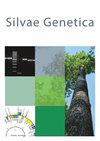阔叶树种和针叶树种的高分子量 DNA 提取
IF 1
4区 农林科学
Q3 FORESTRY
引用次数: 0
摘要
近年来,基于长读数的植物基因组测序也越来越多地应用于树种。这些基因组项目的一个关键步骤是成功提取高质量、足量的高分子量 DNA,这对于长读数测序至关重要。树木中高分子量DNA的提取一直受到限制且难以进行。要想成功提取,必须针对树种修改提取方案。在此,我们介绍一种从阔叶树种 Fraxinus excelsior 和针叶树种 Taxus baccata 提取高分子量 DNA 的方法。该方案以细胞核分离为基础,分为两个主要步骤,即使用细胞核分离缓冲液进行细胞核分离,以及使用太平洋生物科学公司(PacBio)的 Nanobind® 植物细胞核试剂盒进行 DNA 提取。该方案适用于不同树种,可获得高质量的高分子量 DNA,用于牛津纳米孔技术(ONT)和 PacBio 测序。利用四种来自Fraxinus excel-sior的高分子量DNA制备物进行ONT测序,结果出现了不同的读长N50值(12.91-38.19 kb)和总碱基输出(5.81-23.17 Gb),强调了高分子量DNA测序流水线的复杂性。PacBio HiFi测序产生的Taxus baccata环状共识测序读数平均长度为12.9 kb,N50为13.59 kb。总之,本研究提出了一种从不同挑战性树种中获取高分子量 DNA 的方案,并讨论了将该方案应用于其他树种时可以考虑的几个要点。本文章由计算机程序翻译,如有差异,请以英文原文为准。
High-molecular-weight DNA extraction for broadleaved and conifer tree species
Plant genome sequencing based on long reads has increasingly been applied also to tree species in recent years. A crucial step in these genome projects is the successful extraction of high-molecular-weight DNA in high quality and sufficient quantity, which is imperative for long-read sequencing. The extraction of high-molecular-weight DNA in trees has been limited and difficult to conduct. To achieve successful extraction, modification of the protocol for tree species is necessary. Here, we present a protocol for high-molecular-weight DNA extraction from the broadleaved tree species Fraxinus excelsior and from the conifer species Taxus baccata . The protocol is based on nuclei isolation and is divided into two main steps, i.e. nuclei separation based on the nuclei isolation buffer and DNA extraction using the Nanobind® plant nuclei kit by Pacific Biosciences (PacBio). The protocol can be applied to different tree species to obtain high-molecular-weight DNA in high quality, which can be used for Oxford Nanopore Technologies (ONT) and PacBio sequencing. ONT sequencing using four high-molecular-weight DNA preparations from Fraxinus excel-sior resulted in different read length N50 values (12.91-38.19 kb) and total base output (5.81-23.17 Gb), emphasizing the complex nature of the sequencing pipeline of high-molecular-weight DNA. PacBio HiFi sequencing of Taxus baccata produced circular consensus sequencing reads with an average length of 12.9 kb and an N50 of 13.59 kb. Altogether, this study presents a protocol to obtain high-molecular-weight DNA from different challenging tree species and discusses several important points that can be considered when adapting the protocol to additional species.
求助全文
通过发布文献求助,成功后即可免费获取论文全文。
去求助
来源期刊

Silvae Genetica
农林科学-林学
CiteScore
2.20
自引率
10.00%
发文量
10
审稿时长
3 months
期刊介绍:
Silvae Genetica is an international peer reviewed journal with more than 65 year tradition and experience in all fields of theoretical and applied Forest Genetics and Tree breeding. It continues "Zeitschrift für Forstgenetik und Forstpflanzenzüchtung" (Journal of Forest Genetics and Forest Tree Breeding) founded by W. LANGNER in 1951.
 求助内容:
求助内容: 应助结果提醒方式:
应助结果提醒方式:


